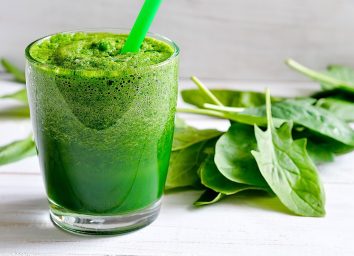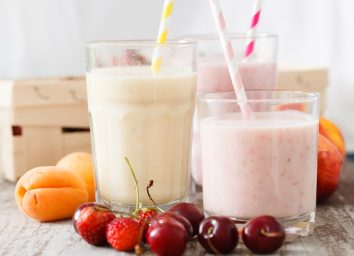What Happens to Your Body When You Drink a Smoothie Every Day
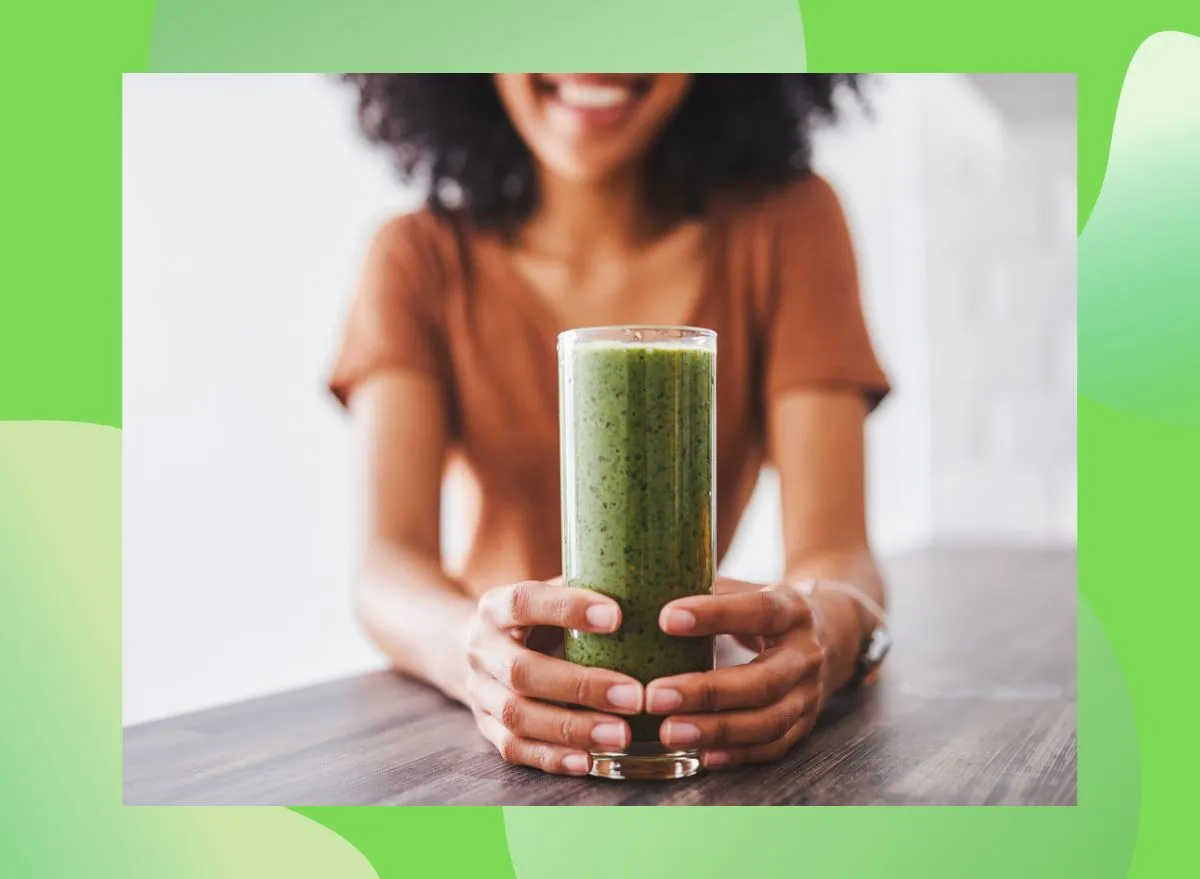
Who doesn't love a good smoothie? They're affordable, convenient, portable, and easy to make. Plus, with the right ingredients, they can be a nutrient-dense meal. If you're someone who enjoys a daily smoothie, you may be curious about how it's impacting your health. Are smoothies healthy? And are there downsides to your daily smoothie habit?
In short, smoothies offer several benefits along with a few potential drawbacks, but their overall impact on your health largely depends on what you put inside your blender.
"Drinking smoothies every day can have positive health benefits, like increasing your intake of fruits and vegetables, fiber, and antioxidants," says Lisa Young, PhD, RDN. So, if you're incorporating a variety of vegetables, fruit, seeds, nuts, and other nutritious ingredients, your smoothie can become one of the healthiest parts of your day. However, it's important to be aware of a couple of potential risks when crafting your smoothies with the wrong ingredients, such as excessive calorie and sugar content.
Read on to learn what dietitians have to say about the specific pros and cons of your smoothie habit. Then, check out these 20 Best-Ever Weight Loss Smoothies.
You can get a nutrient boost.
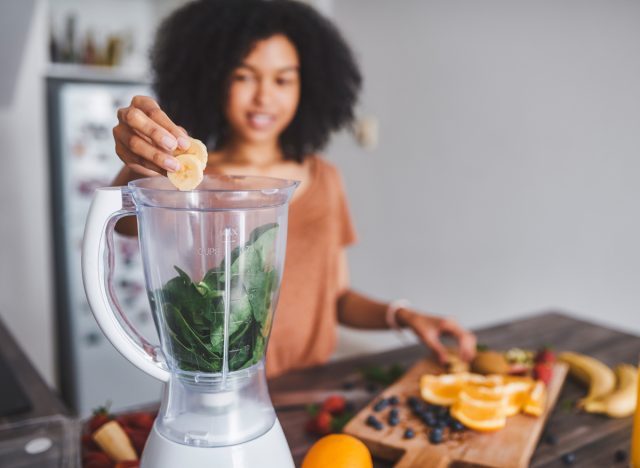
One of the easiest ways to get a nutrient-rich snack is to make a smoothie at home. According to Mary Sabat MS, RDN, LD, smoothies, especially green smoothies, "typically contain a variety of fruits and vegetables, providing a wide array of essential vitamins, minerals, and antioxidants necessary for overall health and well-being."
For example, let's say you need to get a little more iron in your diet. You can throw together a smoothie and add iron-rich foods like spinach, tofu, or pumpkin seeds. Need more protein? Looking for antioxidant-rich snacks? Pile your smoothie up with berries, leafy greens, nuts, and seeds.
You can easily increase your vegetable intake.
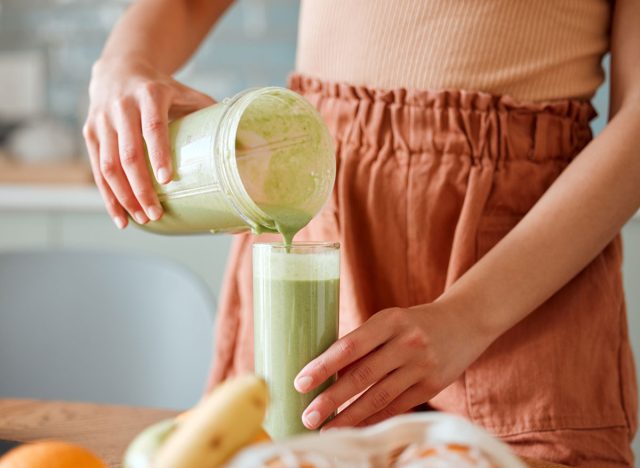
If you're looking to add more vegetables to your day, Sabat adds that smoothies are perfect for this, too.
"Many people struggle to consume enough vegetables in their daily diet, and drinking a smoothie is an easy and delicious way to boost your vegetable intake without feeling overwhelmed by large salads or cooked vegetables."
Consider loading your smoothie up with spinach, kale, cauliflower, or avocado.
You may improve your digestion.
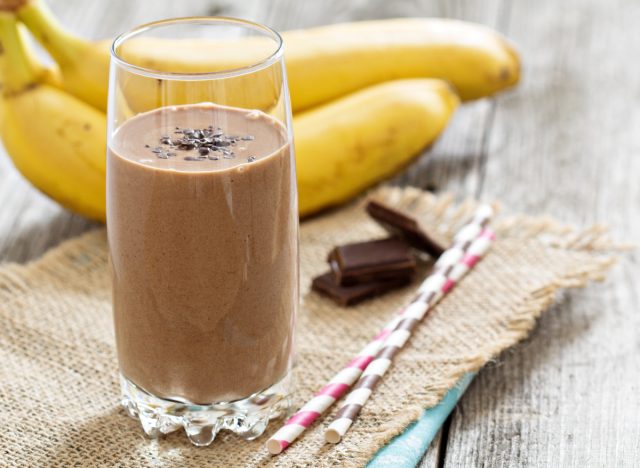
Sabat notes that it can help improve your digestion if you regularly drink fiber-rich smoothies.
"The high-fiber content of smoothies can aid digestion and promote regular bowel movements, helping to prevent constipation and maintain a healthy digestive system," she says.
For fiber-rich foods to put in your smoothies, try ingredients like berries, chia seeds, figs, apples, oats, cacao, canned pumpkin, almonds, or avocado.
You can support your immunity.
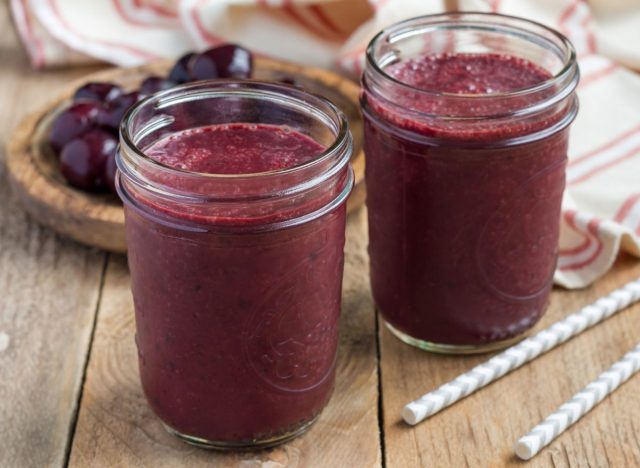
Daily smoothies can allow you to consume more immunity-boosting nutrients. "Some of the vitamins, minerals, and antioxidants found in smoothies can help strengthen the immune system, making it more resilient to infections and illnesses," says Sabat.
For instance, vitamin C is known to help boost immunity, and you can get more of this vitamin through smoothie ingredients like strawberries, oranges, and orange juice. Zinc is another crucial nutrient for a healthy immune system, and adding things like oats, pumpkin seeds, whole milk yogurt, cashews, and almonds can give you that zinc boost your body needs.
It can help with weight management
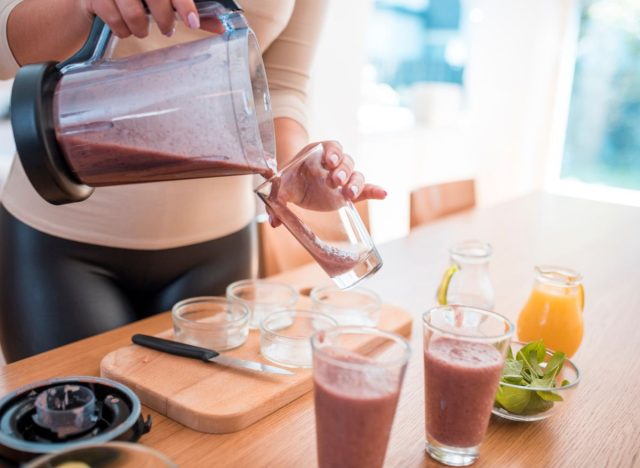
Some people drink smoothies as a part of a weight loss or weight management plan, something Sabat says is a great idea due to the low-calorie, high-nutrient nature of most smoothies. "Incorporating them into your diet can help you feel full and satisfied while consuming fewer calories overall," she says.
It's easy to personalize your smoothies to meet your specific weight loss goals. For instance, maybe you're trying to incorporate more protein, so you add protein powder, nuts, and nut butter, or you're looking for more fiber so you add fruits, vegetables, and seeds. Whatever you need for your weight loss or management efforts, smoothies can help you get there.
Your skin may become healthier
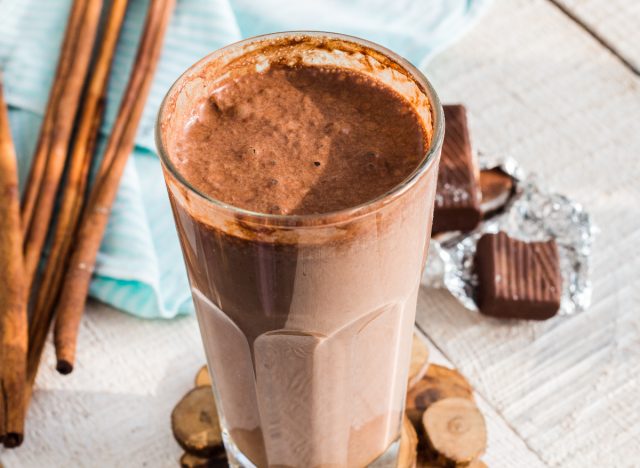
You may not think of your skin when you're drinking your smoothie, but Sabat says there is potential to improve the health of your skin with your daily smoothie drink.
"The vitamins and antioxidants in some smoothies can promote healthy skin by combating oxidative stress and supporting collagen production, leading to a clearer complexion and a more youthful appearance," she says.
For instance, foods like walnuts, almonds, and avocado contain healthy fats that have been linked to better skin health, and fruits like strawberries and kiwi contain vitamin C, which is a nutrient that has been linked to smoother skin and less wrinkles.
You can increase your energy

There are natural foods and drinks—other than coffee and energy drinks—that can give you sustainable energy throughout the day, and many of these items can be put into a smoothie!
"The combination of some of the fruits and vegetables found in smoothies provides a natural source of energy, helping to combat fatigue and improve overall vitality," says Sabat. And beyond just fruits and vegetables, there are nuts, seeds, and sources of dairy that can boost energy levels as well.
Foods like yogurt, nuts, bananas, oats, avocado, berries, and matcha powder are common smoothie ingredients that can boost your energy and leave you feeling rejuvenated for the rest of the day.
You may consume a lot of sugar
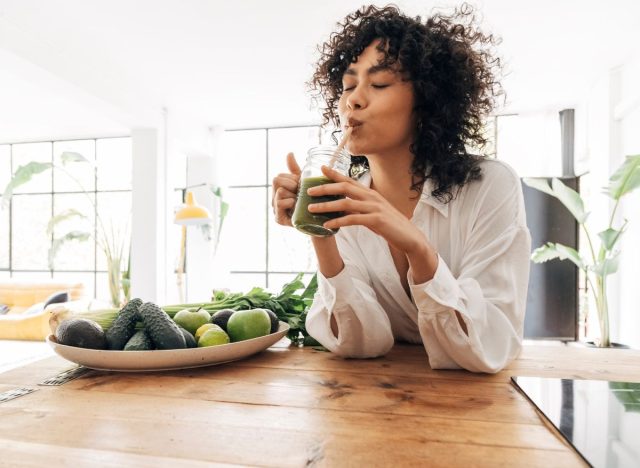
We've talked a lot about how easy it is to make healthy smoothies full of nutrient-rich ingredients, but if you're opting for store-bought smoothies—either those from a smoothie shop or a bottled one from the grocery store—you may be taking in more sugar than you realize.
Many store-bought smoothies go heavier on added sugars in the form of ingredients like maple syrup, honey, or agave. These ingredients aren't harmful in smaller quantities, but when you're not the one making the smoothie, it's a lot harder to control how much of each ingredient is being used.
If you consistently consume high-sugar smoothies that don't contain much fiber or protein, your blood sugar may spike and you'll most likely be left feeling hungry and unsatisfied.
You may experience bloating or gas
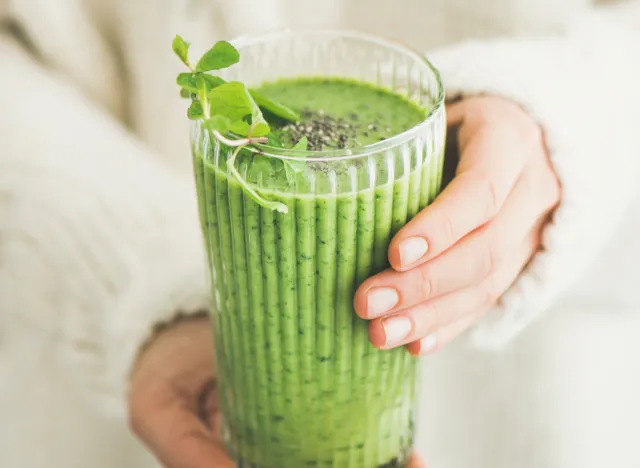
We previously mentioned how eating a high-fiber smoothie can be great for your digestion, but be warned that if you're not used to taking in much fiber, your body may react to a high-fiber drink with excess gas or bloating because of the way it alters your gut microbiome. Sabat says this is especially true "if you have a sensitive digestive system or certain gastrointestinal conditions like irritable bowel syndrome (IBS)."
Fiber is still an important nutrient to consume regularly, so don't give up on your smoothies! If you're experiencing some bloating, try incorporating fiber more slowly into your diet and with smaller quantities at a time until your gut can get used to it.
Drinking a smoothie as a meal replacement may leave you feeling hungry.
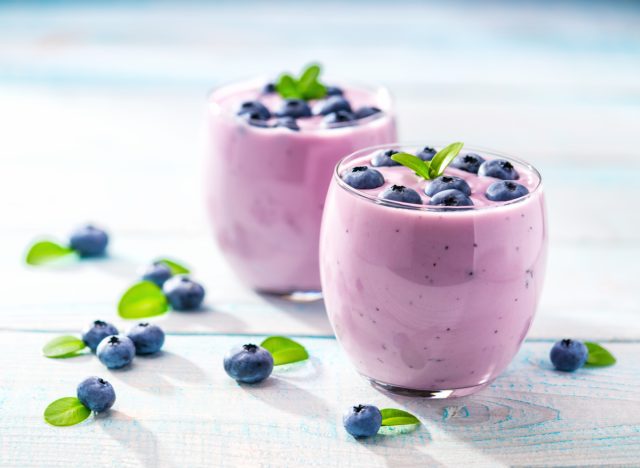
According to Young, smoothies may not always be the best meal replacement. If you're making a smoothie for breakfast but don't use enough protein, fiber, and healthy fats, your drink may provide calories that aren't going to sustain you.
She says, "While smoothies are rich in fiber, they are not as satiating as a complete meal, which can lead to more cravings and overeating throughout the day. It's best to drink smoothies in moderation with a balanced diet and be mindful of the ingredients incorporated."
- Source: Dietary fiber: Essential for a healthy diet. (2022f, November 4). Mayo Clinic. https://www.mayoclinic.org/healthy-lifestyle/nutrition-and-healthy-eating/in-depth/fiber/art-20043983#:~:text=Dietary%20fiber%20increases%20the%20weight,Helps%20maintain%20bowel%20health.
- Source: Website, N. (2021, November 18). Vitamin C. nhs.uk. https://www.nhs.uk/conditions/vitamins-and-minerals/vitamin-c/
- Source: Prasad AS. Zinc in human health: effect of zinc on immune cells. Mol Med. 2008 May-Jun;14(5-6):353-7. doi: 10.2119/2008-00033.Prasad. PMID: 18385818; PMCID: PMC2277319.
- Source: https://pubmed.ncbi.nlm.nih.gov/20085665/
- Source: https://pubmed.ncbi.nlm.nih.gov/17921406/
- Source: Zhang M, Juraschek SP, Appel LJ, Pasricha PJ, Miller ER 3rd, Mueller NT. Effects of High-Fiber Diets and Macronutrient Substitution on Bloating: Findings From the OmniHeart Trial. Clin Transl Gastroenterol. 2020 Jan;11(1):e00122. doi: 10.14309/ctg.0000000000000122. PMID: 31972610; PMCID: PMC7056053.


